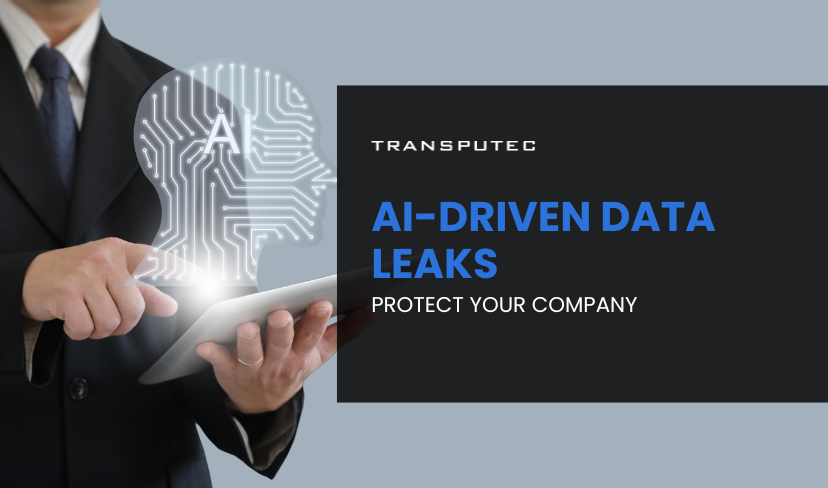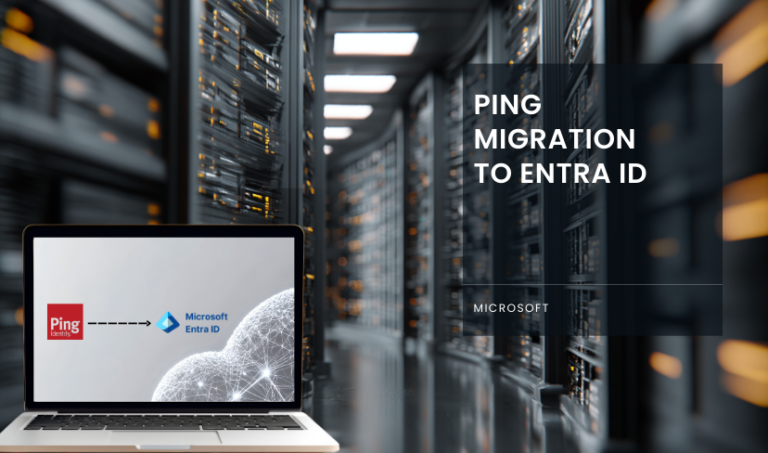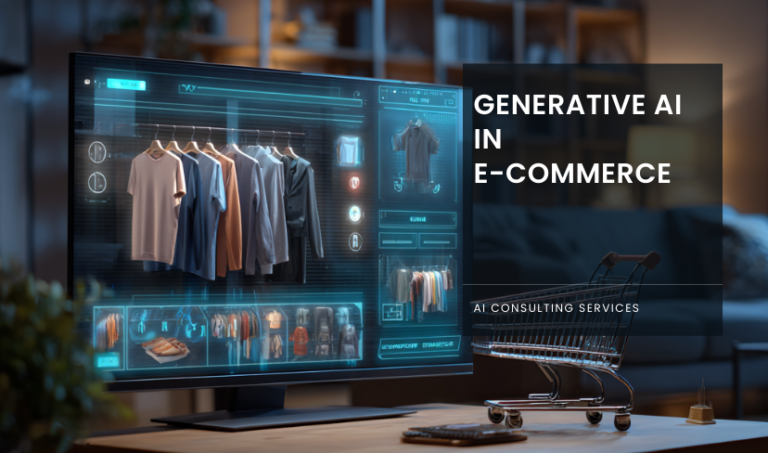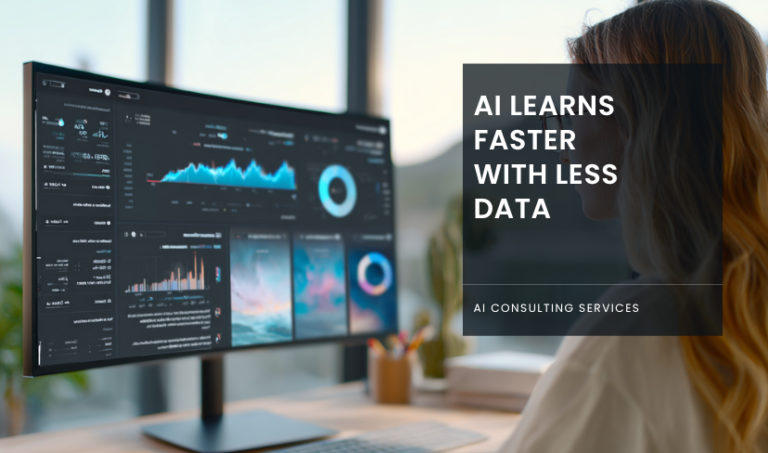Written by KRITIKA SINHA | MARKETING
The advancement of artificial intelligence has transformed how organisations manage, process, and analyse data. However, while AI-driven solutions bring incredible efficiencies, they also introduce new security risks, particularly concerning AI-driven data leaks. The rapid expansion of AI technologies has elevated the likelihood of data leaks, which can result in significant legal, financial, and reputational damage.
In this blog, we’ll explore the risks, types, and prevention strategies of AI-driven data leaks, helping you understand how to keep your company secure in this evolving digital landscape.
Is Your Company Prepared for AI-Driven Data Leaks?
AI-driven data leaks pose a growing threat to modern businesses. The stakes are high, with financial, operational, and reputational risks at play. It’s essential to evaluate your current data security practices, understand the unique risks posed by AI, and implement targeted defences.
At Transputec, we specialise in helping organisations secure their AI systems and data, offering cutting-edge solutions to stay ahead of emerging threats.
What Are AI-Driven Data Leaks?
AI-driven data leaks are data breaches or unauthorised exposures of sensitive data resulting from vulnerabilities in artificial intelligence systems or the misuse of AI by malicious actors. Unlike traditional leaks, AI-driven leaks often involve vast amounts of data processed or generated by machine learning algorithms. These leaks can occur through several avenues, such as poorly secured AI models, compromised data pipelines, and the improper handling of sensitive data.
AI systems are now integral in diverse industries, from finance to healthcare, to provide insights and automation. With this increased AI dependency, data leak risks have also grown. According to a recent report by Gartner, companies that adopt AI without implementing robust security measures will experience an 80% increase in data leaks by 2025, underscoring the urgency of addressing AI-driven data security.
Why Are AI-Driven Data Leaks More Dangerous?
AI-driven data leaks pose unique challenges compared to traditional breaches, including:
Massive Data Volumes
AI systems handle vast data sets that often include sensitive customer, financial, and business information. A single AI-driven data leak can compromise millions of records, creating exponential damage.Hidden Vulnerabilities in Complex Models
Machine learning models and algorithms are complex, making it challenging to detect vulnerabilities. Attackers often exploit hidden weaknesses within these models to gain unauthorised access.High-Speed Data Exposure
AI systems operate at remarkable speeds, and if compromised, they can release significant amounts of data in mere seconds, accelerating the damage.Increased Attack Surfaces
AI-driven solutions involve multiple interconnected systems, APIs, and cloud services. Each of these connections represents an entry point for potential data leaks.
These unique aspects make AI-driven data leaks harder to detect, and the rapid data exfiltration capabilities of AI-driven systems intensify the risks.
Types of AI-Driven Data Leaks
AI-driven data leaks can manifest in various forms, depending on how AI technology is applied within an organisation. Key types of AI-driven data leaks include:
- Data Poisoning Attacks: Attackers inject malicious data into an AI training set, corrupting the model and potentially leaking sensitive information.
- Model Inversion Attacks: By reversing the AI model, attackers can infer sensitive training data, exposing confidential information.
- Membership Inference Attacks: Attackers analyse model outputs to determine if specific data was part of the training set, revealing sensitive data.
Understanding these distinct types of AI-driven data leaks is crucial for establishing effective defenses.
Protect your Business 24/7 with Transputec!
Our Managed SOC Cost Calculator estimates potential expenses for security tools and other costs based on your requirements.
How to Safeguard Your Company Against AI-Driven Data Leaks
Here are actionable strategies to protect against AI-driven data leaks:
1. Implement Strong Encryption Protocols
Encrypt data at every stage of the AI lifecycle, from storage to transit, to ensure that data remains secure even if accessed by unauthorised parties.
2. Use Differential Privacy Techniques
Differential privacy helps protect individual data points within an AI model, reducing the risk of sensitive data exposure. Leading companies, including Apple and Google, have integrated differential privacy to minimise data leak risks.
3. Regularly Audit and Update AI Models
Regular audits can help identify and resolve potential vulnerabilities. Automated tools can assist in pinpointing anomalies and weaknesses within your AI models.
4. Employ Robust Access Controls
Limit access to AI systems and data only to essential personnel. Multi-factor authentication and role-based access control can prevent unauthorised access.
5. Leverage Threat Detection Systems
AI-powered security tools can detect unusual behaviours or unauthorised access attempts, alerting teams to potential breaches. For example, behaviour analytics tools can flag suspicious data access patterns, enabling prompt response actions.
6. Invest in AI Security Training for Your Team
Employee training remains a powerful defence against AI-driven data leaks. Security awareness programs should be updated regularly to include the latest threats and techniques used by attackers.
Transputec Advantage in Combating AI-Driven Data Leaks
At Transputec, we specialise in cutting-edge cybersecurity solutions designed to protect your business from AI-driven data leaks. Our comprehensive approach includes:
- Advanced Threat Detection: Our AI-powered systems continuously monitor your network for signs of AI-driven attacks.
- Rapid Response Protocols: We implement automated response mechanisms to contain and mitigate AI-driven data leaks quickly.
- Customised Security Strategies: We tailor our solutions to your specific business needs, ensuring comprehensive protection against AI-driven threats.
As AI technology evolves, so will the nature of AI-driven data leaks. Staying ahead of these threats requires constant vigilance and adaptation. Transputec is committed to ongoing research and development to ensure our clients are always protected against the latest AI-driven security risks.
Conclusion: Act Now to Protect Your Data
AI-driven data leaks pose a significant threat to businesses of all sizes, but with the right strategies and tools in place, you can safeguard your company’s sensitive information. By proactively addressing the risks and implementing robust cybersecurity measures, you can ensure your organisation is prepared to withstand the challenges of the digital age.
If you’re concerned about the risk of AI-driven data leaks and want to ensure your company is prepared, contact Transputec to speak with one of our cybersecurity experts and get started on a comprehensive security plan.

Secure Your Business!
Ready to explore how we can enhance your security posture? Contact us today to speak with one of our experts.
FAQs
What are AI-driven data leaks, and why are they different from traditional data leaks?
AI-driven data leaks involve unauthorized exposure of data due to vulnerabilities in AI systems, which are complex and handle vast amounts of sensitive data. Unlike traditional leaks, these are harder to detect and mitigate due to the complexity and speed at which AI processes information.
How can AI-driven data leaks affect my business financially?
AI-driven data leaks can be financially devastating, with potential fines, loss of customer trust, and operational costs to address breaches. According to IBM, the average cost of a data breach is $4.24 million, but AI-driven leaks can cost even more due to the high volume of compromised data.
Can AI technology itself help prevent AI-driven data leaks?
Yes, AI-driven security tools play a crucial role in identifying and preventing data leaks. AI can analyze patterns, detect anomalies, and provide real-time alerts for suspicious activities, offering advanced security measures against data breaches.
What industries are most vulnerable to AI-driven data leaks?
Industries relying heavily on sensitive data, such as healthcare, finance, and e-commerce, face higher risks. These sectors have vast datasets and use AI extensively, increasing the attack surface for potential data leaks.
What immediate steps should I take if my company experiences an AI-driven data leak?
First, contain the leak by restricting access and isolating affected systems. Notify affected parties and regulatory bodies as required by law. Conduct a thorough investigation and work with a cybersecurity firm to assess the breach, identify vulnerabilities, and implement robust security measures to prevent future incidents.




